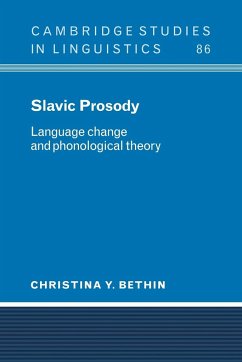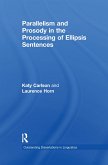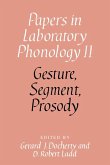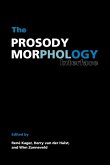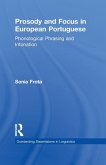Slavic Prosody is about the Slavic languages and how they have changed over time.
In Slavic Prosody Professor Bethin gives a coherent account of the Slavic languages at the time of their differentiation and relates these developments to issues in phonological theory. First Professor Bethin argues that the syllable structure of Slavic changed before the fall of the jers and suggests that intrasyllabic and intersyllabic reorganization in Late Common Slavic was far more significant for Slavic prosody than the loss of weak jers. She then makes a case for the existence of a bisyllabic prosodic domain in Late Common Slavic and trochaic metrical organization. Finally, she explores the implications of Slavic data for phonological theory, discussing sonority, skeletal structure, the representation of length and prominence, and language typology in some detail.
Review quote:
"The book is a rich in information, Slavicists will enjoy the thorough historiography of their field; non-Slavicists will appreciate the detailed explications of Slavic data; all will welcome the many clear diagrams spelling out the author's claims....no one can deny that her book is a major contribution, an accomplishment that neither Slavicists nor phonlogists can afford to ignore."
Slavic Review
Table of contents:
Preface; List of abbreviations; Introduction; 1. The syllable in Slavic: form and function; 2. Beyond the syllable: prominence relations; 3. Theoretical considerations; Conclusion; Notes; References; Index.
Hinweis: Dieser Artikel kann nur an eine deutsche Lieferadresse ausgeliefert werden.
In Slavic Prosody Professor Bethin gives a coherent account of the Slavic languages at the time of their differentiation and relates these developments to issues in phonological theory. First Professor Bethin argues that the syllable structure of Slavic changed before the fall of the jers and suggests that intrasyllabic and intersyllabic reorganization in Late Common Slavic was far more significant for Slavic prosody than the loss of weak jers. She then makes a case for the existence of a bisyllabic prosodic domain in Late Common Slavic and trochaic metrical organization. Finally, she explores the implications of Slavic data for phonological theory, discussing sonority, skeletal structure, the representation of length and prominence, and language typology in some detail.
Review quote:
"The book is a rich in information, Slavicists will enjoy the thorough historiography of their field; non-Slavicists will appreciate the detailed explications of Slavic data; all will welcome the many clear diagrams spelling out the author's claims....no one can deny that her book is a major contribution, an accomplishment that neither Slavicists nor phonlogists can afford to ignore."
Slavic Review
Table of contents:
Preface; List of abbreviations; Introduction; 1. The syllable in Slavic: form and function; 2. Beyond the syllable: prominence relations; 3. Theoretical considerations; Conclusion; Notes; References; Index.
Hinweis: Dieser Artikel kann nur an eine deutsche Lieferadresse ausgeliefert werden.

